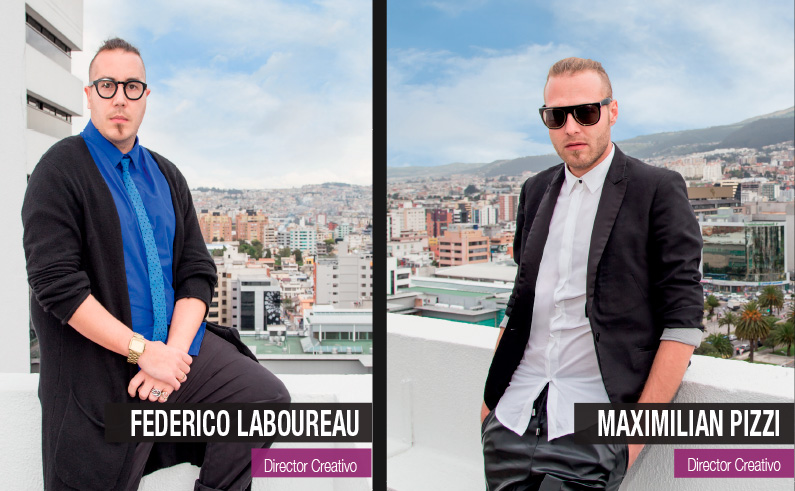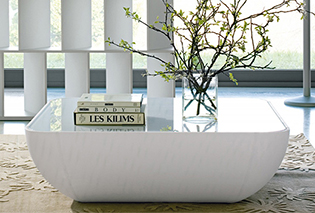Director of Harper´s Bazaar Argentina
Ana Torrejón is an icon in the editorial world. She is currently the director of Harper´s Bazaar Argentina, and former director of Elle, Elle Decor, and Revista Claudia. She was also in charge of the famous Hermés brand. Educated, stylish and sophisticated, she walked the streets of Quito and shared a pleasant conversation with us.
How did you first become interested in fashion?
It started in my childhood. Both my grandmother and her sister worked in Haute Couture, and all that universe was part of my everyday life. Later with my interest in literature and art I was able to organize a cultural vision that tied both concepts in a very special way. Fashion is exciting and a never ending topic.
Tell me about your career…
I am a journalist and a teacher. I have collaborated with the media all my life. Lots of work and lots of people have been part of my career, and what follows is an urge to keep doing things.

Federico Labureau, Ana Torrejón, y Maximilian Pizzi
Which details do you take into account when it comes to writing?
The news is pivotal, thus when I write the leitmotiv is to set up a serious framework in order to report what is happening. Occasionally I have worked on opinion columns, setting a context that communicates a specialized way of thinking and including as much theory as possible. Of course, the text is structured, narrative must be Federico Labureau, Ana Torrejón, y Maximilian Pizzi good and it has to be well edited.
And when the topic is fashion?
The difference is in the professionalism and mastering of communication. The operation is not done in a day, it is exercised permanently throughout time, and with perseverance. You have to consider that fashion is a cultural phenomenon, and if you don’t know where it started, it is difficult to guide and communicate it. Roots are the identity of the people, for which reason if local fashion is communicated identifying the niche, editorial management will make it transcend.
What would you recommend to a journalist looking to focus their carreer on fashion?
The first advice I would give him is to study communication. Nowadays it is unthinkable to be part of the media without being prepared for it. On the other hand, the fashion world is very competitive and you must invest in excellence; excellence comes from knowledge.
Any advice to future Ecuadorian designers?
I have to highlight the importance of studying, analyzing the markets and the region, and working together so the outcome is the expected one.
What impressed you the most about Ecuador?
Ecuador is a culturally exquisite country, with a remarkable handicraft tradition. I found Museo del Alabado´s sculptures from the Coastal region to be overwhelming.
“Ecuador is a culturally exquisite country, with a remarkable handicraft tradition”.
-Ana Torrejón

Federico Laboureau was born in Argentina. He is a designer, professor at Palermo University, fashion producer and art director, among other things.
How did you become interested in fashion?
I was always very interested in art. I studied Computer Engineering for three and a half years, and then decided to study fashion. This career was more related to art and so it was more like me. Many doors opened and it became my passion, the engine that makes me love my job every day.
How did you begin?
While I was studying fashion I worked in publicity. My first big job opportunity was to be in charge of a sequence of contemporary dance presentations at Colon Theatre in Buenos Aires, which is the most renowned theatre in Latin America. Although this experience raised a lot of comments, it also opened doors for me to relate in a more direct way with famous fashion brands. In that journey I met Maximilian Pizzi, who is now my associate. Together we started FLatelier.
What do you do in Project Runway Latin America (PRLA)?
In the three editions of PRLA, FLatelier has been in charge of casting and participant selection; of the creative development of each challenge, art direction and everything related with the visual image of the areas where the program is shot. We are also in charge of choosing the guest judges, and of the institutional image of each new season (press and billboards). It is a great challenge with a lot of pressure, because the program depends greatly on us.
Which elements are pivotal when creating?
We stand next to the consumer and try to provide experiences that are different. It is fundamental to find a good concept that will stay current throughout the six months of the season. It is pivotal that everything we generate carry a differentiating factor, and this is our great premise when we work.
Has Ecuadorian culture been an inspiration to develop your creativity?
Latin America in general, and Ecuador in particular, are very inspiring for the fashion industry. The mix of textures, colors and flavors so characteristic of the region has allowed for both designers and brands to have a space of their own in the international arena, positioning the area and simultaneously promoting local design.
On what elements of Ecuadorian culture will you be inspired for future creations?
It would be very interesting to go deep into the origins of Ecuadorian society, the typical dresses, the food and the diversity of textures and colors.
What do you admire the most about Ecuador?
Speaking about fashion, I admire that there is a primal status where lots of things can be developed and created, unlike other countries with distinctive precedents. In Ecuador there are lot of things to do.

